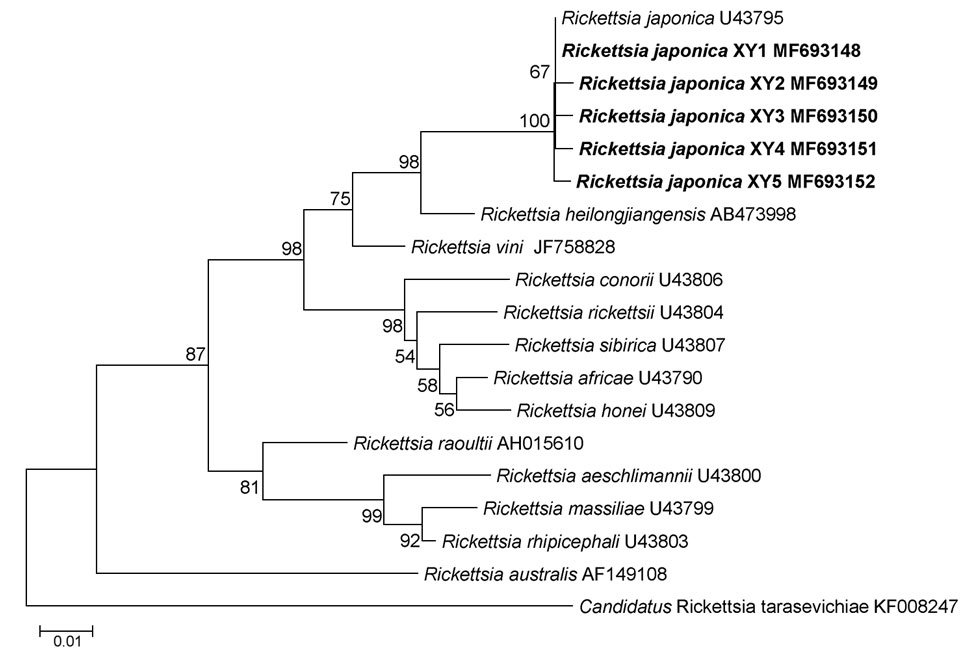Volume 25, Number 9—September 2019
Dispatch
Rickettsia japonica Infections in Humans, Xinyang, China, 2014–2017
Figure 1

Figure 1. Phylogenetic analysis of Rickettsia species from febrile patients treated at The People’s Liberation Army 990 Hospital for Rickettsia japonica infection, Xinyang, China, March 2014–June 2017 (bold), and reference species. Tree was constructed on the basis of the outer member protein A nucleotide (311-bp) gene sequence. We used the maximum-likelihood method with the best substitution model (Tamura 3-parameter plus gamma) and MEGA version 5.0 (http://www.megasoftware.net). We applied a bootstrap analysis of 1,000 replicates to assess the reliability of the reconstructed phylogenies. GenBank accession numbers are provided. Scale bar indicates estimated evolutionary distance.
Page created: August 20, 2019
Page updated: August 20, 2019
Page reviewed: August 20, 2019
The conclusions, findings, and opinions expressed by authors contributing to this journal do not necessarily reflect the official position of the U.S. Department of Health and Human Services, the Public Health Service, the Centers for Disease Control and Prevention, or the authors' affiliated institutions. Use of trade names is for identification only and does not imply endorsement by any of the groups named above.